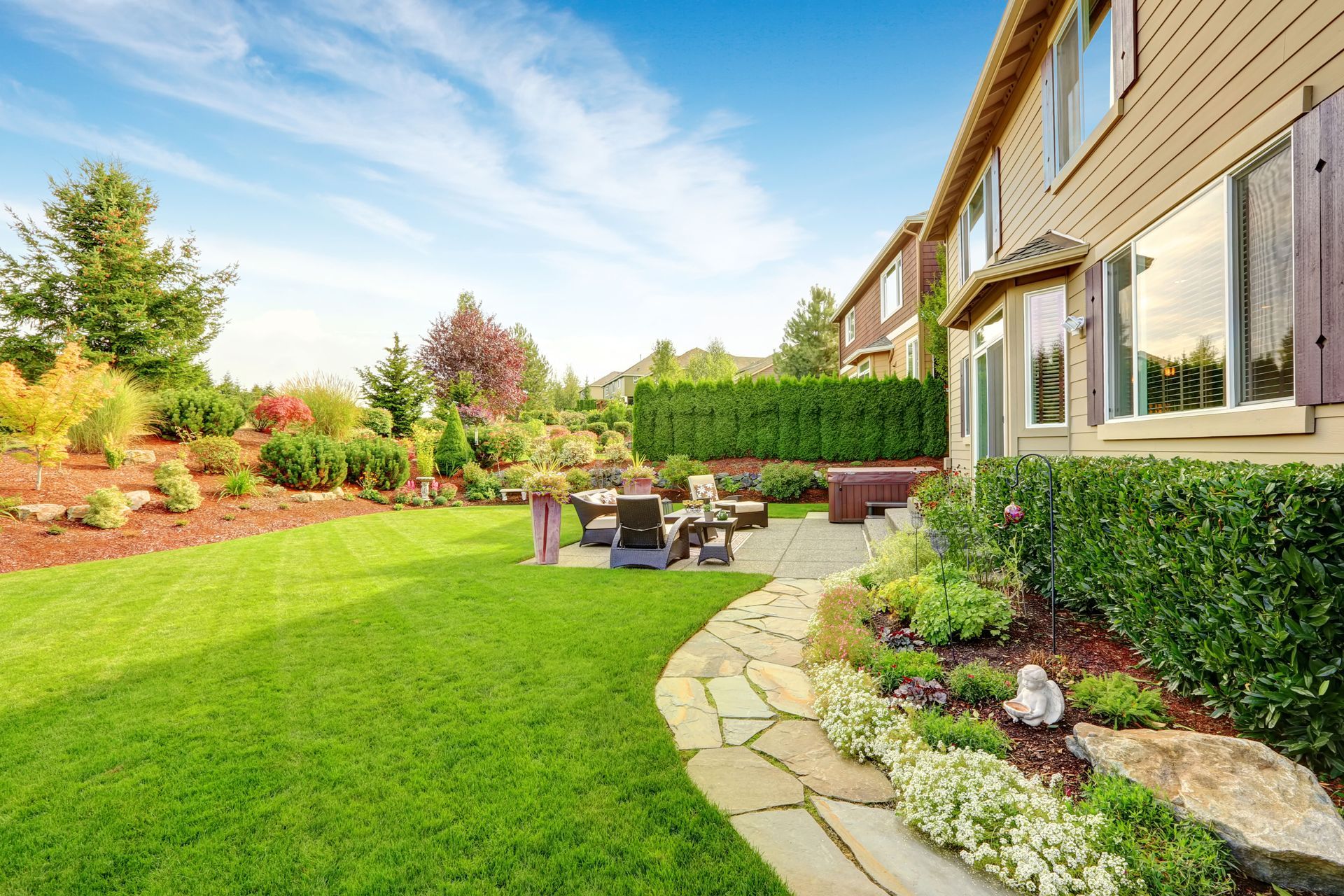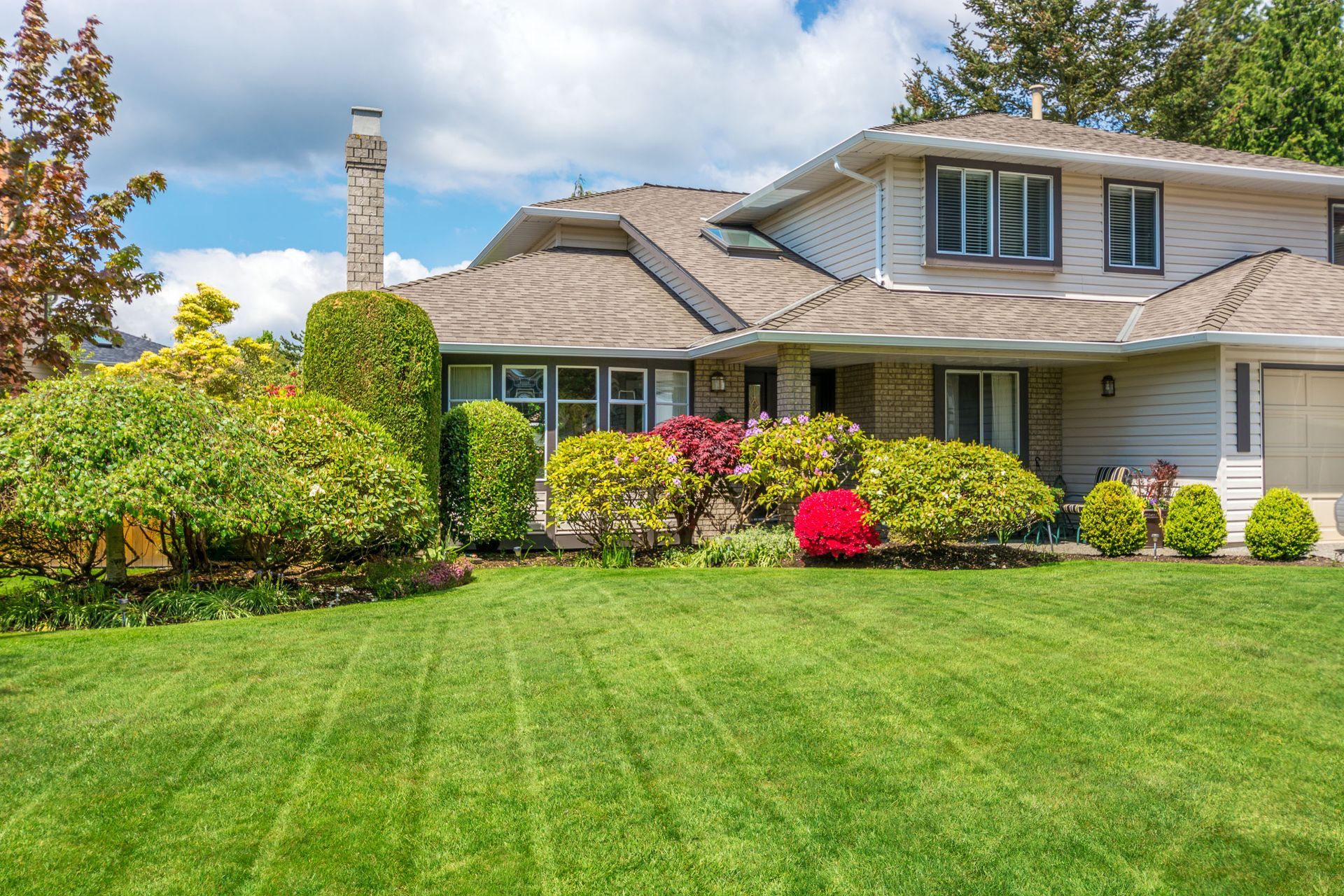Top Tips on Garden Maintenance from Leading Local Landscapers
When you imagine a beautiful garden that flourishes season after season, it's not just luck or a few watering sessions that bring it to life. Behind every vibrant bed of flowers, every healthy shrub, every neatly kept lawn, there's careful maintenance—often guided by the knowledge of local landscapers who understand soil, climate, pests, and timing. In this post, Ryan's Green Thumb Landscaping shares top tips on garden maintenance from local landscapers, so you can keep your outdoor spaces healthy, tidy, and thriving.
Planning Ahead: Strategize Your Seasonal Calendar
One of the first things that local landscapers emphasize is the value of planning ahead. A garden doesn't care for itself; it needs consistent attention, and the best results come when you schedule tasks by season rather than responding reactively.
Begin by mapping out your garden tasks for each quarter: pruning, fertilizing, mulching, planting, soil testing, and pest checks. Local landscapers often work by a calendar—spring is for soil prep and planting, summer for irrigation and pest control, fall for cleanup and winter prep, and winter for design, planning, or dormant treatments. By treating your garden care as a continuous process rather than occasional spurts, you give yourself room to catch small issues before they become big ones.
Think of your seasonal calendar as your roadmap. Committing to it early—say, in January or February—lets you reserve the right materials, tools, and labor when the demands are highest. Many local landscapers maintain their own annual calendars so that critical tasks like pruning native shrubs, heavy mulching, or major replanting happen at the optimal time for your region.
Mulching Wisely: Protect Roots Without Smothering Growth
One of the most widely recommended practices by professional gardeners and local landscapers is mulching—and doing it correctly. Mulch moderates soil temperature, conserves moisture, suppresses weeds, and contributes organic matter as it decomposes. But like many good things, mulch can be overdone.
According to This Old House, you should apply a two- to three-inch layer of mulch around your plants, being careful not to pile it against tree trunks or plant stems to prevent rot and allow the plants to breathe. That little detail—not against the trunk or stem—is one that many homeowners stumble on. Local landscapers often correct thick mulch volcanoes around trees, which can suffocate roots or invite disease.
Apply mulch in a donut or shallow cone shape, starting a few inches from the base of a plant and tapering it outward. Replenish your mulch each year (or more often if it decomposes quickly), but avoid piling on top of itself—old mulch should be gently incorporated or removed before adding new. In this way, you let the roots breathe while still reaping all the benefits of this protective layer.
Watering Intelligently: Timing, Amount, and Method
Even in regions with regular rainfall, watering is one of the most misunderstood aspects of garden care. Too little and plants suffer; too much and roots drown or disease takes hold. Local landscapers stress that watering should be done with intention, not by rote.
First, understand the water needs of each plant zone in your garden. Some beds may be drought-tolerant, others may house thirsty ornamentals. Match your irrigation accordingly. Water deeply and less frequently rather than shallow, daily sprinkling. A good rule of thumb is to ensure an inch of water per week (including rainfall) for many garden beds—but local landscapers prefer soil checks over rules.
Use soaker hoses, drip systems, or micro-sprays rather than overhead sprinklers whenever possible. These methods deliver water directly to the root zone, where it's needed most, and reduce evaporation and foliage splashing (which can spread disease). Water in the early morning or late evening to reduce loss to heat and wind and to allow leaves to dry before nightfall.
Also, monitor moisture levels. Local landscapers will use the finger test: push your finger into the top few inches of soil—if it feels dry, it's time to water; if it feels damp, wait. Avoid rigid schedules and instead respond to weather, plant need, and soil conditions.
Pruning Regularly: Shape, Safety, and Stimulation
Pruning is one of those tasks many homeowners postpone or avoid altogether, but local landscapers know it is critical for plant health, safety, and aesthetic form. Done properly and at the right time, pruning can rejuvenate plants, encourage stronger growth, and prevent hazards.
First, remove dead, diseased, or crossing branches to improve airflow and light penetration. Always use clean, sharp tools and make cuts at a slight angle just outside the branch collar. For flowering shrubs, prune immediately after bloom so you don't sacrifice next year's buds. For shade trees or larger perennials, late winter or early spring dormancy is often ideal.
While shaping is important, avoid over-pruning or shearing shrubs into unnatural forms—local landscapers often warn that aggressive shaping leads to weak growth and unnatural structure. Rather, follow the plant's natural growth habit. Safety pruning (removing low limbs, hazards near walkways, or limbs too close to structures) is also a priority: regular inspections prevent surprises and are part of the routine local landscapers use to keep gardens safe and manageable.
Fertilizing Strategically: Nourish Without Overdoing
The goal of fertilization is to supply nutrients your soil may lack—but more is not always better. Local landscapers often test soil first to identify deficiencies in nitrogen, phosphorus, potassium, and micronutrients, then tailor fertilization accordingly.
In many established gardens, organic matter—compost, well-aged manure, or leaf mold—offers slow-release nutrients and improves soil structure. Use synthetic or granular fertilizes cautiously and only when needed. Over-fertilizing can burn roots, promote weak growth, or trigger pest and disease problems.
When you do apply fertilizer, follow package instructions, and ideally incorporate it into the root zone (gently work into topsoil) rather than scattering on top. A light follow-up watering helps move nutrients downward. Local landscapers will often break fertilization into cycles: early spring for recovery, midseason for steady growth, and early fall for hardiness buildup, avoiding late-season pushes that tempt tender growth before winter.
Weed Control Consistently: Starve, Suppress, Remove
Weeds are persistent—like uninvited guests. The difference between a garden and a jungle often lies in how weeds are managed. Local landscapers adopt a three-pronged approach: starve, suppress, remove.
Starve weeds by limiting their light and soil opportunity. That's where your mulch layer plays a star role—it shades the soil surface and blocks weed seed germination. Suppress weed growth by maintaining healthy, dense plantings that compete for space and nutrients. Remove weeds carefully and early—before they set seed—to reduce future populations.
Whenever you pull weeds, remove the entire root if possible, rather than leaving fragments that may regrow. Local landscapers sometimes use light hand tools to dig them out, especially in perennial beds, and then replace the displaced soil and cover with mulch. Avoid over-reliance on herbicides; use them selectively and responsibly, targeting problem areas rather than broadcasting chemicals everywhere.
Edge Cleanly: Define, Contain, and Beautify
Edging is more than just decorative—it helps contain turf, prevents grass creep, and gives your garden beds clean lines that make maintenance easier. Local landscapers often say that well-defined edges are what take a yard from good to great.
Use a sharp spade, half-moon edging tool, or mechanical edger to slice a neat boundary between lawn and bed, about two to four inches deep. Keep that edge clean by trimming any grass runners that cross over. Consider installing physical edging materials—metal, stone, bricks, or plastic edging—to make it easier to maintain straight lines over time.
As you edge, don't disturb the soil too deeply near roots. After edging, place a small bead of mulch along the border to help suppress weeds and retain moisture. That clean boundary not only looks crisp, but helps watering, mowing, and maintenance go more smoothly.
Monitor and Adjust: Observe, Record, Respond
Even the best plan needs flexibility. Local landscapers habitually monitor their landscapes, keep notes, and adjust methods if something isn't working. Your garden is a living system—weather, pests, microclimates, and shifting sunlight patterns can all require adaptation.
Keep a simple garden journal: note bloom times, pest occurrences, fertilizer dates, irrigation adjustments, and plant performance. If a bed is underperforming year after year, consider reworking the soil, changing species, or increasing sunlight. If irrigation runs dry too quickly, adjust flow or mulching.
When something goes awry—a shrub struggles, leaves yellow, growth is stunted—return to fundamentals: soil, moisture, light. Local landscapers diagnose by going back to these basics before layering on complex solutions. Their ability to adapt, observe, and respond is a key reason their gardens thrive.
Collaborate with Professionals: When to Call Local Landscapers
You can do a lot on your own, but there's real value in having local landscapers assist with major tasks or periodic checkups. Some jobs—regrading for drainage, hardscaping, major planting overhauls, or diagnosing tricky pest/disease issues—are best handled with professional insight, equipment, and guarantees.
Working with local landscapers gives you seasonal or annual support that ensures your efforts are sustained over time. A seasoned landscaper can identify structural problems you may miss, advise on species suited to your microclimate, and help with timely maintenance. Even a one-time consultation can help you fine-tune your garden plan, raising your chances of long-term success.
At Ryan's Green Thumb Landscaping, our team of local landscapers is always ready to assist clients in South Jersey and beyond. Whether you want help with regular lawn maintenance, a full garden redesign, or periodic checkups to keep your outdoor spaces in top shape, we bring that same expertise, attention to detail, and care to your project. Don't wait until problems overwhelm your garden—reach out, let us help, and enjoy the beauty that a well cared for landscape can offer.



Share On: